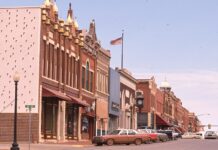This year’s outbreak of pertussis is the worst in 50 years, according to the U.S. Centers for Disease Control and Prevention (CDC). Across the nation, doctors have reported more than 18,000 cases of this disease commonly known as whooping cough. Officials in Washington state have declared a pertussis epidemic with a 1,300 percent increase from last year. Thirty-seven states have reported increases in the disease compared with the same time period in 2011.
However, in Oklahoma, the picture is quite different. Chief of immunization services at the State Department of Health, Bobbie Nubine says Oklahoma has only recorded 41 cases of pertussis, this year.
“We are down a little bit from this time last year,” confirms Nubine.
How has Oklahoma managed to combat this epidemic? Vaccines, says Nubine.
Beginning in 2011, the state Legislature now requires seventh graders to have a dTap booster. This regulation has allowed Oklahomans to be proactive against pertussis, explains Nubine.
The adolescent population has been hit hard in this outbreak. Dr. Christine Allen, a pediatric intensivist at the Children’s Hospital at OU Medical Center, explains that adolescents are particularly susceptible due to waning vaccine immunity.
“Protective immunity wanes after about 5-10 years,” explains Allen. “Adolescents need to get booster vaccinations.”
While the number of cases this year is alarmingly high nationwide, pertussis outbreaks are expected. The CDC says typically the U.S. has peaks in the disease every three to five years and frequent outbreaks. However, the most concerning trend is the overall increase over the past 20 years.
“There has been a steady increase in pertussis cases in the US,” says Allen. “1,010 cases were reported in 1976, and in 2010, there were 27,550 cases reported.”
The cause for the rising incidents of pertussis is not fully understood. Two possible explanations are the waning vaccine immunity in adolescents and the decreased use of the vaccine.
Why is preventing pertussis so important? For most, whooping cough begins with symptoms typical of the common cold, with cough and congestion. However, unlike the common cold, pertussis can develop into coughing fits that continue for weeks. It is also highly contagious, cautions Allen.
While these symptoms are very unpleasant, for infants, whooping cough can be deadly.
“(Infants) are more likely to develop pneumonia with a pertussis infection,” explains Allen.
Other common complications for babies can be episodes of apnea or seizures.
“Most infants acquire (pertussis) from a household contact,” cautions Allen.
Even with the state’s low numbers, whooping cough cost one Oklahoma family their seven-week-old infant. Dustin and Kristen Smith’s son, Aiden, died in June as a result of whooping cough.
Both Allen and Nubine say that the best way to prevent the condition is to get vaccinated.
To be fully protected, children receive a series of five shots beginning at two months of age, ending about 4 to 6 years of age. Then, 11- to 12-year-olds need a one-time booster, reminds Nubine.
“Children that are not vaccinated are eight times more likely to get whooping cough,” confirms Nubine. “Vaccinated children are also less contagious, experience shorter duration of symptoms and are less likely to be hospitalized.”
Pertussis vaccines are effective in preventing whooping cough, ensures Allen.
The Health Department recommends pregnant women after 20 weeks of gestation, households with infants and child care providers caring for infants also get a booster.
“If you have insurance, you can get it from your health provider,” suggests Nubine. “If you don’t have insurance, you can get it at your local county health department at no cost. Call your local office for specific details like times and days.”






















